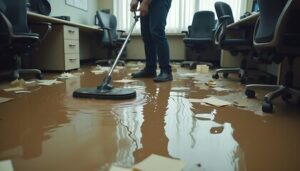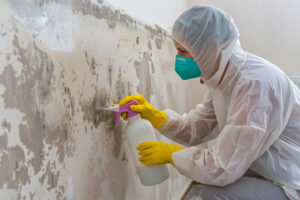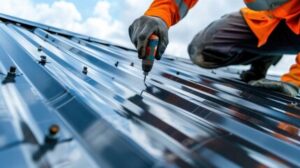Cincinnati Air Conditioning cools a home by cycling cool air through vents. Central air conditioners, ductless mini-splits and window units all work in the same way conceptually.

In the evaporator coils, cold liquid refrigerant absorbs heat from your home’s warm air, converting to a gas. The built-up pressure is then released through an expansion valve and the cycle begins again.
A wall-mounted air conditioner is a great choice for areas where ductwork won’t work or you simply don’t have the space. Air conditioning units that mount on the wall allow you to keep a clean and open living area while also keeping your cool. They are also easy to install and require minimal maintenance to keep in peak condition.
These wall mounted air conditioners are also ideal for portable buildings like job trailers, classrooms, and prefabricated utility buildings for pump stations or cell phone shelters, where a traditional ducted system isn’t possible. This is because the system utilizes an outdoor unit that essentially makes your building its own ductwork by drawing in the outside air, cooling it, and then introducing it into the building through the conditioned walls.
In addition to air conditioning, these types of wall units can also be used for heating. They have the ability to change the direction of refrigerant flow, which allows them to function as a heat pump by simply changing a setting on your thermostat.
This is what gives these wall-mounted AC units their versatility, as they can operate in both hot and cold climates. They also work well in homes without ductwork because they have the ability to distribute air directly to each room or zone.
Because these systems are so versatile, they can be easily installed by a professional. In fact, they are usually one of the easiest systems to install compared to those that require ductwork. This is because they don’t need to be vented through the ceiling, which can cause a lot of disruption and require more advanced tools to get up and running.
These units are also a popular choice for new construction projects, where installing ductwork can be very expensive. In addition to this, they can be easily retrofitted into existing structures, which is a much cheaper alternative to putting in a whole new duct system.
Lastly, these units are very energy efficient and can help to lower your overall electricity bills. They are also very quiet in operation and have the ability to cool your space down quickly. They can even be used in conjunction with a solar power system for added efficiency.
Energy-Efficient Units
Energy efficiency is a top priority for many consumers, especially since they can save money on electricity bills by using more efficient units. ENERGY STAR certified units offer higher energy efficiency and lower environmental impact than standard models. They also typically come with rebates to help reduce the initial investment.
In order to qualify as an ENERGY STAR unit, an air conditioning system must meet the minimum efficiencies for its region. This helps to account for regional climate differences and allows the manufacturer to optimize their product for your specific area. It also makes it possible for manufacturers to offer a wide range of options for each market, ensuring that every home can find the perfect cooling solution.
Aside from choosing an energy efficient model, you can also improve its efficiency by regularly changing your filters and utilizing smart features like programmable thermostats. ENERGY STAR estimates that these tools can cut energy usage by up to 8% per year.
Another important factor when choosing an air conditioner is its BTU capacity, which measures the amount of heat it can move in one hour. The larger the BTU capacity, the more air it can cool.
The efficiency of an air conditioner is rated by its SEER (Seasonal Energy Efficiency Ratio) rating. This number is a measure of the total cooling output during a typical cooling season divided by its electrical energy consumption in Watt-Hours.
A higher SEER rating means less electricity is used to run the AC, which can reduce your electric bill significantly. Ideally, you should choose a SEER rating of at least 20 to enjoy the best possible energy efficiency.
Other energy-saving features you can look for in an air conditioner are variable speed fans, which allow the fan to operate at varying speeds depending on your home’s temperature and humidity. Additionally, a DC inverter motor offers improved efficiency by eliminating the use of mechanical brushes and commutators to operate the compressor. These features also reduce vibration and noise to ensure a quieter experience. Finally, smart ACs with built-in sensors can monitor and adjust the operating mode to achieve maximum efficiency.
Remote Controls
Whether you’re looking to get a smart AC remote control or simply upgrade your current model, there are many options available. The key is to choose a device with the right features for your needs. Consider factors such as user interface, programmable options, and smart home integrations. Also, look for a universal remote that works with multiple brands and devices, to save money on replacements in the future.
Air conditioning remote controls feature several symbols and modes that cater to different climate and user preferences. Familiarising yourself with these helps you take advantage of the full functionality of your system and optimise energy efficiency.
COOL Mode – The cooling function sets the temperature and fan speed to the desired level, providing optimum comfort and energy savings. This option usually has an icon of a globe with arrows pointing left and right to show the current cooling or heating status. QUIET Mode – The fan operates at a reduced speed to minimise noise and create a quiet and restful environment. This mode can be used for sleeping or working in a calm and quiet atmosphere.
AUTO Mode – This setting enables the automatic swing of the horizontal louver up and down to change the direction of airflow. This mode may have a button to select the desired angle of airflow, which can be changed each time.
If your AC remote doesn’t work properly, there could be a number of reasons why. Check the battery levels and ensure there’s no obstruction or interference from other wireless gadgets that may be obstructing the signal transmission between the remote and your HVAC device. You can also contact a professional to check the remote for synchronisation or other technology issues that require expert assistance.
Modern air conditioners can connect to your smartphone for enhanced energy efficiency and convenience. App integration allows you to control your HVAC settings remotely, which is especially useful if you’re away from home. Some apps are even capable of learning your preferences over time, adjusting the settings automatically and saving you some effort.
Smart Connectivity
In the age of Internet of Things (IoT) technology, smart air conditioning is a common feature offered by many HVAC brands. These systems typically use Wi-Fi connectivity, advanced algorithms, and sensors to improve comfort and efficiency. They also interface with other smart home systems, allowing you to control them using voice commands or apps on your smartphone.
A key advantage of smart AC systems is their ability to provide real-time usage analytics, which allow you to spot patterns in your energy consumption. These data can help you make changes to reduce your utility bills and improve energy efficiency. You can even track usage history to identify when your air conditioner needs routine maintenance, like cleaning, replacement filters, or a professional tune-up.
The advanced features of smart AC systems also include a variety of settings designed to optimise comfort and efficiency. For example, they can offer predefined modes such as “Sleep Mode” for nighttime comfort or “Eco Mode” to save energy. They may also have reminders to clean or replace the filter and offer geolocation tracking to detect your location and adjust the indoor temperature accordingly.
Besides these basic features, smart air conditioners can be upgraded to make them truly smart. For instance, they can be connected to a smart home automation system like Google Home, Amazon Alexa, or Apple HomeKit so you can control them via your smartphone, tablet, or voice-activated smart speakers. This integration allows you to create custom routines and scenarios that maximize comfort and energy efficiency.
As with any device that uses internet connectivity, smart air conditioners come with security concerns. Since they collect and store user data, they could be accessed by unauthorized parties if not properly secured. Fortunately, most smart AC controllers come with a range of built-in security features to protect the privacy and safety of users.
One of the best ways to ensure your AC is secure is to use multi-factor authentication and update the app frequently. Also, it’s important to keep in mind that smart air conditioners are not a substitute for regular AC maintenance.








